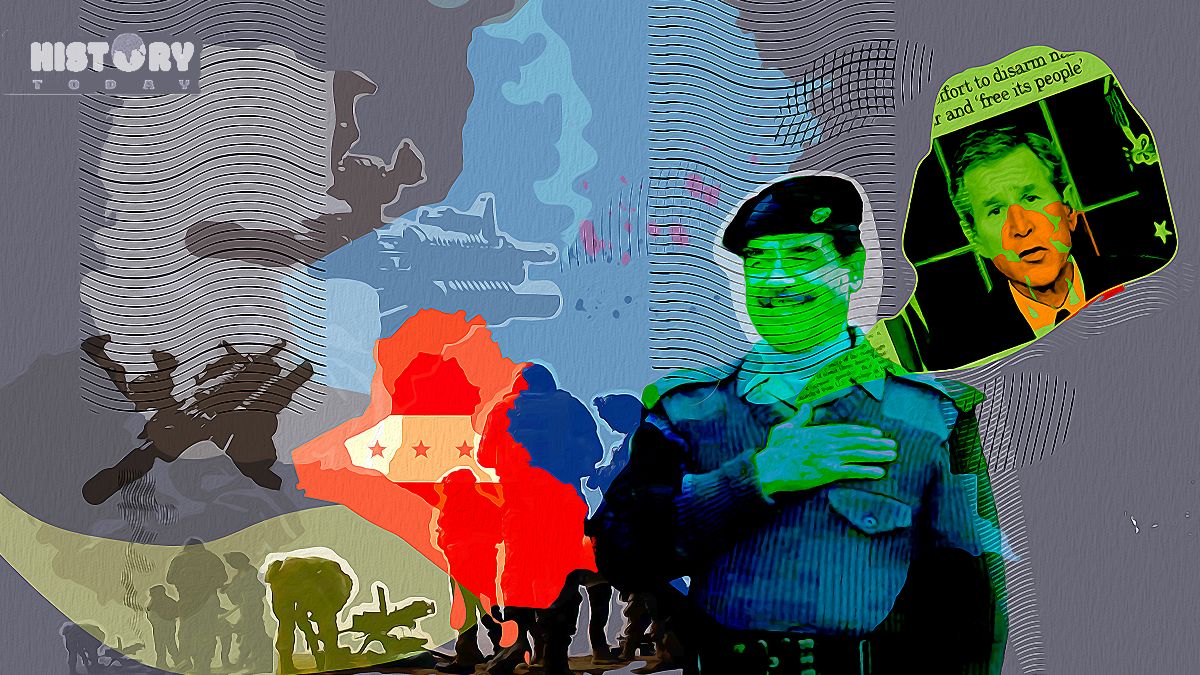The United States along with the United Kingdom launched an attack on Iraq, later known as the Iraq War, on March 19, 2003. Then-US President George W Bush claimed that Iraq’s dictator Saddam Hussein was in the process of building weapons of mass destruction, adding that the Iranian government was supporting ’terrorist groups'.
If you are a history geek who loves to learn about important events from the past, Firstpost Explainers’ ongoing series, History Today will be your one-stop destination to explore key events.
On this day in 1911, the first International Women’s Day was observed in several European countries including Austria, Denmark, Germany and Switzerland. Meanwhile, American singer and songwriter Bob Dylan released his debut album marking the beginning of one of the most influential careers in music history.
Here is all that happened on this day across the world.
US launches attacks on Iraq
Then-President of the United States George W Bush appeared on a televised programme and addressed the world, “At this hour, American and coalition forces are in the early stages of military operations to disarm Iraq, to free its people and to defend the world from grave danger.” Following this, the first explosions began to rock Iraq’s capital, Baghdad, on March 19, 2003.
Marking the beginning of the Iraq War , the US began its assault with Tomahawk cruise missiles hitting what President Bush called “military targets,” launched from the Persian Gulf. It was immediately followed by a counter-response via Iraqi radio, which proclaimed the attacks as “the stupidity of aggression” by “the evil ones.”
But why did the war begin in the first place? Resolution 687, passed by the UN Security Council, mandated the destruction of all Iraqi weapons of mass destruction (WMDs), encompassing nuclear, biological and chemical weapons, as well as long-range ballistic missiles. But after the September 11, 2001, attacks on New York’s World Trade Center, the Bush administration claimed Iraq was still in possession of some WMDs. So, President Bush characterised Iraq as part of an international “axis of evil” with Iran and North Korea, while also claiming that Iraq continued to amass and manufacture weapons of mass destruction.
On March 17, Bush drew a line in the sand, ending diplomacy and demanding that Saddam Hussein and his sons evacuate Iraq within 48 hours. The outbreak of hostilities occurred roughly an hour and a half later on March 19 when the US deadline for Saddam Hussein’s departure from Iraq had passed.
The war quickly led to the toppling of Saddam Hussein’s regime, but it also marked the beginning of a prolonged and turbulent period of violence, insurgency and instability in Iraq. On December 15, 2011, the US announced the conclusion of the Iraq War, which had lasted almost ten years.
International Women’s Day observed for the first time
The inaugural observance of International Women’s Day took place on March 19, 1911, in a number of European nations, including Austria, Denmark, Germany and Switzerland. The day was marked by rallies and events where over a million people participated to demand women’s rights, including the right to vote, the right to work, and the right to hold public office, as well as an end to gender discrimination.
The idea for the day came from Clara Zetkin, a German socialist and women’s rights activist, who proposed the establishment of a special day to advocate for women’s suffrage and labour rights at the International Socialist Women’s Conference in Copenhagen in 1910. March 19 was chosen to commemorate the 1848 Revolution in Prussia, when the king promised to grant women the right to vote — although it was a promise that was never fulfilled.
The early observances of International Women’s Day were heavily centered on issues of class and labour rights, reflecting the widespread exploitation of women workers in industrial economies. The day’s momentum was further amplified as socialist and labour movements aligned their efforts with the broader struggle for women’s suffrage.
Today, International Women’s Day is celebrated worldwide, honouring the progress made in women’s rights and highlighting the work that still needs to be done to achieve full gender equality.
Bob Dylan releases his debut album
Before the Beatles and the Rolling Stones, there was one man who had rocked the music world with his first albums in the mid-1960s. It was Bob Dylan . It was on March 19, 1962 that Dylan released his self-titled debut album named Bob Dylan, which introduced the world to his distinctive, gritty voice that immediately captured the attention of listeners.
Dylan’s debut album, released by Columbia Records, contained folk and blues covers and notably, two original songs - “Talkin’ New York” and “Song to Woody,” a direct homage to his idol, Woody Guthrie.
While John Hammond, who signed Dylan, produced the album in a single day, its initial reception was lukewarm. Some Columbia executives dubbed it “Hammond’s Folly” due to poor sales. Nevertheless, it served as the groundwork for Dylan’s revolutionary influence on folk and popular music.
Although it didn’t make an immediate commercial splash, Bob Dylan’s debut album is now regarded as a vital piece of music history, showcasing the roots of a future Nobel Prize-winning songwriter .
This Day, That Year
On this day in 1996, one of the worst fires in the history of the Philippines killed 159 of 400 people present in a nightclub in Manila.
Then-US President Woodrow Wilson signed the Standard Time Act in 1918.
Frederick III became the last Holy Roman emperor to be crowned by a pope in 1452.


)

)
)
)
)
)
)
)
)



